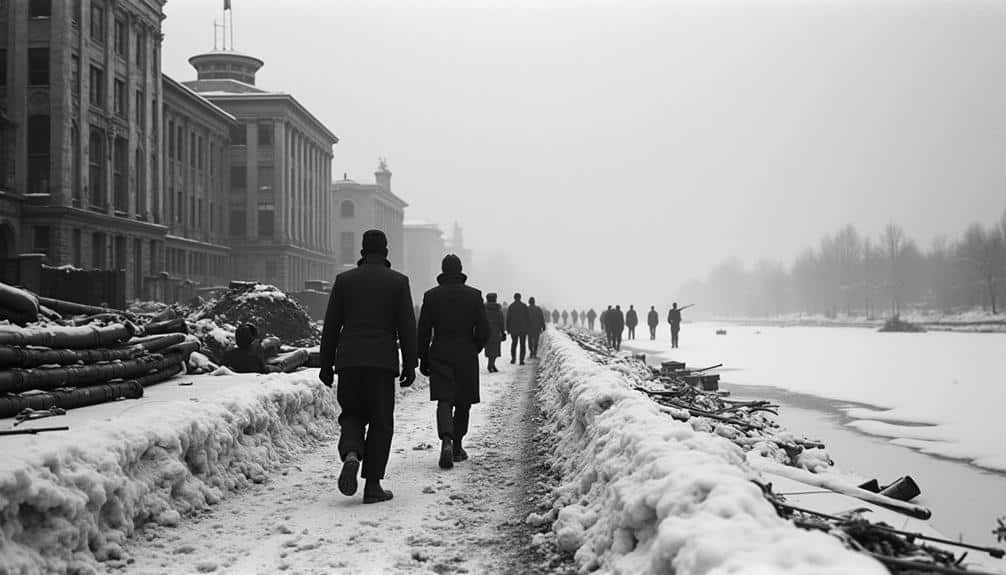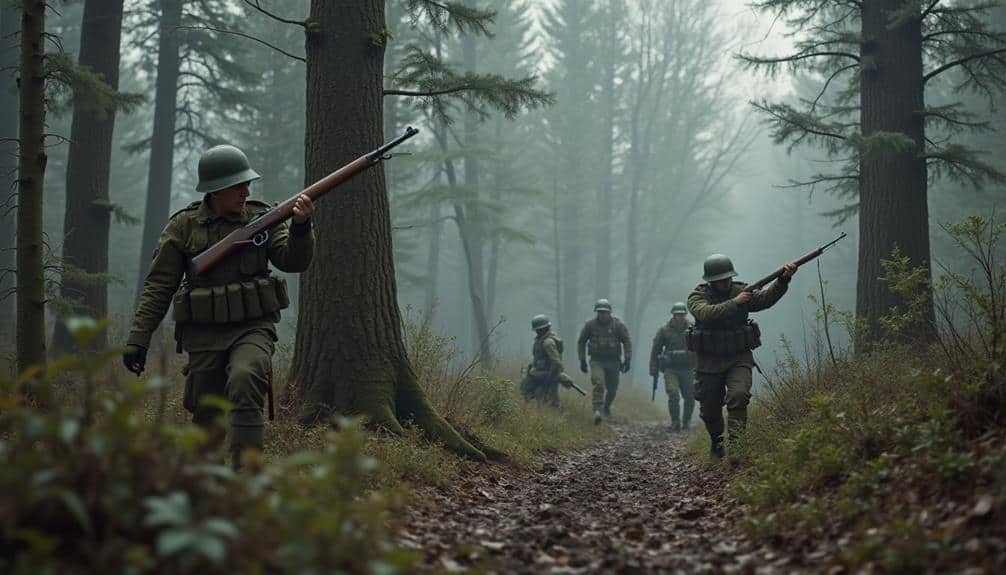Russia’s sacrifice and heroism during “The Great Patriotic War” remain a profound illustration of the nation’s resolute spirit under extreme duress. From the harrowing Siege of Leningrad to the decisive Battle of Stalingrad, Soviet citizens and soldiers demonstrated unparalleled bravery and endurance. The participation of women in combat roles further underscored the collective effort to defend their homeland. These defining moments in history reveal a depth of resilience and unity that shaped the course of the war and beyond. How did these extraordinary acts of valor influence the post-war Soviet Union, and what legacies persist today?
Siege of Leningrad

The Siege of Leningrad, a critical episode of World War II, stands as one of the most harrowing and prolonged blockades in history. Lasting from September 8, 1941, to January 27, 1944, the siege encapsulated both the Leningrad resilience and the immense civilian suffering endured by its inhabitants. The German and Finnish forces encircled Leningrad, aiming to crush Soviet morale and force a surrender through starvation and relentless bombardment.
Amidst this dire situation, the resilience of Leningrad’s citizens emerged as a demonstration of human fortitude. Despite facing severe food shortages, extreme cold, and constant shelling, the population found ways to maintain their spirit and continue crucial wartime production. Factories, often staffed by women and children, produced essential military equipment even under the threat of death.
The civilian suffering was profound and pervasive. Hundreds of thousands succumbed to hunger, with daily rations at times reduced to a mere 125 grams of bread per person. The brutal winter of 1941-1942 further exacerbated the conditions, causing widespread fatalities.
Yet, through sheer determination and collective effort, Leningrad endured, symbolizing not just survival but an unyielding defiance against overwhelming odds.
Battle of Stalingrad
Possibly one of the most pivotal confrontations of World War II, the Battle of Stalingrad marked a turning point on the Eastern Front. This brutal conflict, lasting from August 1942 to February 1943, saw the Soviet Union’s Red Army successfully halt the advance of Nazi Germany.
The strategic importance of Stalingrad, a major industrial city on the Volga River, made it a key target for Adolf Hitler’s ambitions to capture Soviet resources and morale.
The battle’s intensity was characterized by relentless urban warfare, as both sides engaged in fierce street-by-street, building-by-building combat. Stalingrad tactics evolved rapidly in response to the chaotic environment, with the Soviet forces utilizing the rubble and ruins to their advantage.
Snipers became essential, and close-quarters engagements were commonplace. The Red Army, under General Vasily Chuikov, implemented a strategy of “hugging” the enemy, maintaining such close proximity that German air and artillery support became ineffective.
Ultimately, the encirclement and surrender of the German 6th Army, led by General Friedrich Paulus, marked the first major defeat of Hitler’s forces.
The victory at Stalingrad not only bolstered Soviet morale but also marked the beginning of a relentless Soviet advance towards Berlin, altering the course of the war.
Partisan Warfare

As the Red Army began to push back against the Axis forces following the victory at Stalingrad, another notable aspect of Soviet resistance emerged: partisan warfare. This form of irregular military activity, characterized by guerrilla tactics, played a critical role in the broader resistance movements across the occupied territories of the Soviet Union.
Partisans, often composed of local civilians, former soldiers, and even women and children, utilized their intimate knowledge of the terrain to conduct sabotage operations, ambushes, and intelligence gathering.
The effectiveness of these guerrilla tactics cannot be overstated. By disrupting German supply lines, destroying essential infrastructure such as railroads and communication networks, and launching surprise attacks on isolated enemy units, the partisans greatly hindered the efficiency and morale of the Axis forces.
These resistance movements were also important in fostering a sense of hope and solidarity among the local populations, bolstering the overall Soviet war effort.
Moreover, the coordination between partisan groups and the Red Army improved over time, leading to more sophisticated and large-scale operations. This synergy was instrumental in weakening the Axis hold on occupied territories, thereby contributing to the eventual Soviet victory.
Hero Cities
Among the many symbols of Soviet resilience and valor during World War II, Hero Cities stand out as poignant monuments to the extraordinary courage and sacrifice exhibited by their defenders. These cities, recognized officially by the Soviet Union, represent not just geographic locations but the very essence of the heroic legacy that characterized the Soviet struggle against Nazi Germany. The distinction was awarded to cities where the defense was particularly fierce, and the human cost was immeasurable.
The city defenses in these urban battlegrounds were often hastily constructed yet remarkably effective. For example, the Siege of Leningrad, lasting 872 days, epitomized the fortitude and ingenuity of its inhabitants. Despite severe shortages of food and supplies, the city’s defenders repelled relentless assaults, making Leningrad a symbol of unwavering perseverance.
Similarly, the Battle of Stalingrad marked a turning point in the war, where the city’s defenses and the sheer determination of its defenders culminated in a decisive Soviet victory.
Hero Cities like Leningrad, Stalingrad, and others remain enduring representations of the Soviet Union’s indomitable spirit. Their stories continue to inspire, embodying the heroic legacy of those who fought and sacrificed for freedom and survival.
Women in Combat
In the crucible of the Soviet Union’s struggle during World War II, women played an indispensable role in combat, challenging traditional gender roles and demonstrating extraordinary valor.
Female soldiers were pivotal in various combat roles, contributing greatly to the Soviet war effort. The Soviet Union was one of the few nations that actively recruited women into its armed forces, recognizing their potential and necessity in the face of a colossal enemy.
Female soldiers served as snipers, pilots, machine gunners, and even tank crews. Remarkably, the famed 588th Night Bomber Regiment, known as the “Night Witches,” was an all-female aviation unit that conducted harrowing nocturnal bombing raids against German positions. Their precision and bravery earned them tremendous respect from both allies and adversaries.
In addition to these specialized roles, women also participated in frontline infantry units, often fighting alongside their male counterparts in brutal conditions. Their presence in combat roles was not merely symbolic; it was a reflection of their resilience and capability in the direst circumstances.
The heroism and sacrifice of these female soldiers underscore their critical contributions to the Soviet victory in “The Great Patriotic War,” reshaping societal views on women’s roles in combat and beyond.





